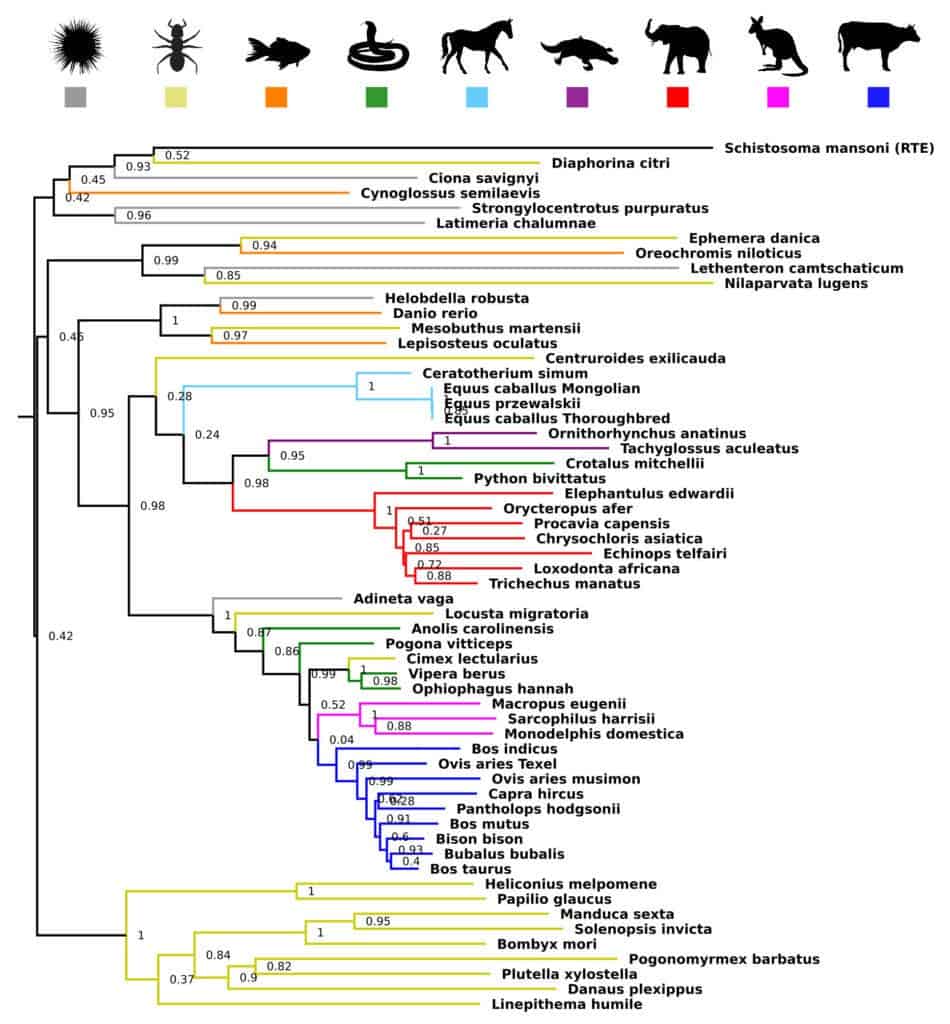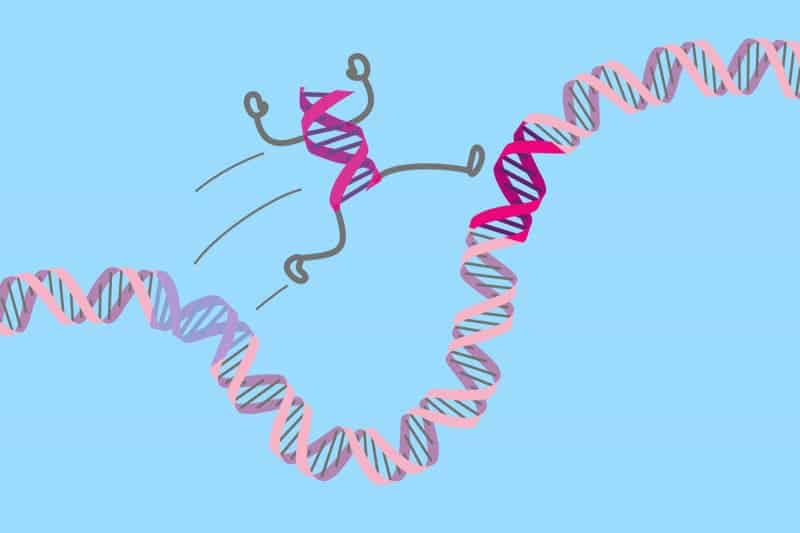We inherit genes from our parents — but that doesn’t mean that all of the DNA in our genome is solely sourced from humans, or even mammals for that matter. In a new study, researchers have found that the transfer of genes between species is more widespread than previously thought, something which may have significantly altered the course of mammalian evolution, and, consequently, that of our lineage.
Some genes “jump”
Believe it or not, genes can jump from one species to another, even in such cases when they’re extremely different from one another — for instance, from plants to animals. Such genes are called cross-species ‘jumping genes’ or transposable elements. Much of our DNA and that of many other organisms is represented by jumping genes. For example, 25% of the genome of cows and sheep are derived from jumping genes.
“Jumping genes, properly called retrotransposons, copy and paste themselves around genomes, and in genomes of other species. How they do this is not yet known although insects like ticks or mosquitoes or possibly viruses may be involved – it’s still a big puzzle,” said Professor David Adelson, Director of the University of Adelaide’s Bioinformatics Hub, and lead author of the new study published in the journal Genome Biology.
“This process is called horizontal transfer, differing from the normal parent-offspring transfer, and it’s had an enormous impact on mammalian evolution.”
[panel style=”panel-success” title=”What are jumping genes” footer=””]
Transposable elements (TEs), also known as “jumping genes,” are DNA sequences that move from one location on the genome to another.
There are two different types of transposons: autosomal transposons and non-autosomal transposons. They are present in all forms of life from bacteria to plants to mammals.[/panel]
Adelson and colleagues combed through the genomes of 759 species of plants, animals, and fungi. They zoomed-in on two particular jumping genes — L1 and BovB.

The BovB jumping gene has appeared in many species that are wide apart on the evolutionary tree. Credit: University of Adelaide.
The L1 element is important in humans, having been associated with cancer and neurological disorders, and previously it was thought to be inherited solely from parent to offspring. But after analyzing a myriad of species, scientists actually found that L1 is a jumping gene, an important discovery that might one day enable researchers to backtrack the evolution of various diseases.
According to Adelson, L1s are abundant in plants and animals, sometimes appearing sporadically in fungi. Most surprisingly, however, L1s are missing from the platypus and echidna, the two Australian monotremes. This suggests that the gene appeared in the mammalian evolutionary pathway after the divergence from monotremes.
The BovB element is much younger than L1, but that doesn’t make it any less interesting. It was first discovered in cows, however, it has since been shown to jump between many different animals, including reptiles, elephants, and marsupials. Adelson believes that ticks are most likely the vector of cross-species BovB transfer.
The new findings suggest that BovB as jumped from even more species than previously thought. It transferred at least twice between frogs and bats, for instance, perhaps with the help of vectors such as bedbugs, leeches, and locusts.
It’s interesting how genes from extremely different foreign creatures can become embedded into our genomes and shape our evolution. We’re only just beginning to understand how jumping genes work, though, which leaves a lot of room for surprises.
“Even though our recent work involved the analysis of genomes from over 750 species, we have only begun to scratch the surface of horizontal gene transfer,” says Professor Adelson. “There are many more species to investigate and other types of jumping genes.”










